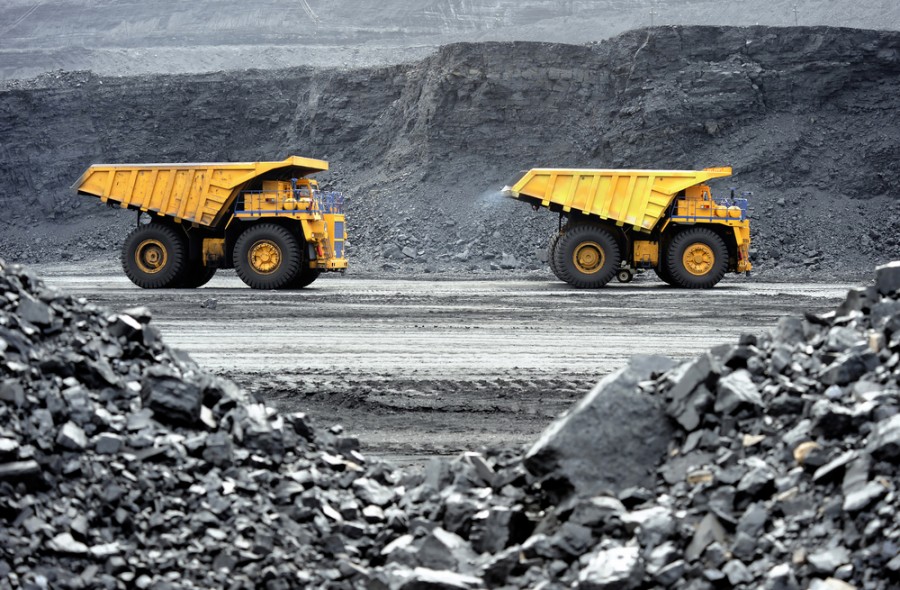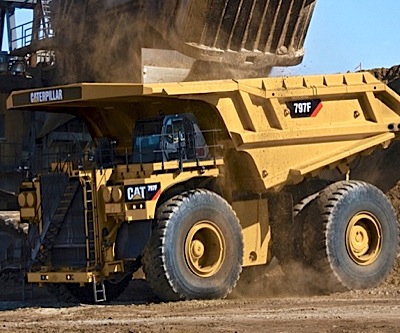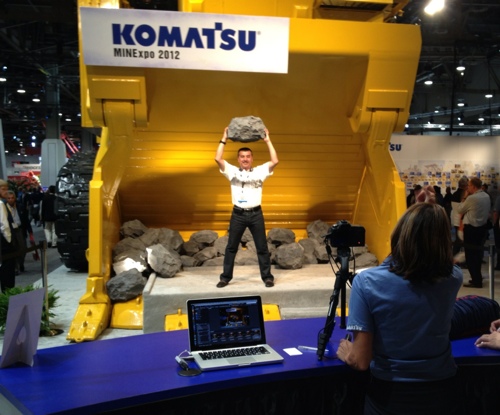
Despite a few commodity price run-ups, miners continue to labour under a downturn, with most having to make adjustments in how they manage their mining equipment.
Where equipment four years ago was running full tilt as producers sought to maximize profits to capture high commodity prices, now much of that equipment is sitting idle, or “parked up” – waiting for the day when a resurgent iron ore, gold or coal price revs its engine back to life.
Of the 42,000 haul trucks over 100 tonnes deployed to the world’s mines, an estimated 35 percent are currently gathering dust.
“What we’ve seen this year, at both our auctions and our competitors’, is a gradual move up the value chain as people get more desperate to sell bigger trucks which aren’t selling.” – Silas Berry, Liquidity Services
While idle equipment is certainly bad news for mine owners, all that surplus machinery – everything from haul trucks and excavators to screening plants and crushers – is turning into a boon for auction houses who are seeing a big increase in the number of lots for certain pieces of equipment as mine owners take to the digital marketplace to rid themselves of surplus capital goods.
In the past, almost all major transactions of used mining equipment were negotiated sales; either directly between mining companies or through brokers and agents.
But the market has changed dramatically. The long lead times to purchase new equipment in 2012-13 are gone and there is no longer a shortage of new and used equipment. An enormous amount of equipment is currently sitting idle in mines all over the world, but the largest concentration appears to be in Australia.
Liquidity Services (NASDAQ:LQDT), one of the world’s largest companies to manage, value and sell capital assets – and the biggest auctioneer by far in Asia – estimates the net book value of mining equipment that is no longer in service or severely under-utilized in Australia is currently well over AUD$2 billion and rising.
Unsurprisingly, the highest-value equipment sitting idle are haul trucks and mining shovels.
Where miners four years ago could negotiate with other mining or service companies when buying or selling equipment, now that equipment is getting harder to unload, with so much of it available on the used market. That is especially true for large equipment, particularly haul trucks.
“There’s an enormous difference between now and 2012. The biggest trend is that bigger and bigger items have suddenly appeared in the auction space,” says Silas Berry, the Australia-based director of mining practice at Liquidity Services.
In a recent interview with MINING.com, Berry said in 2012 virtually no-one was selling haul trucks at auction, with the vast majority sold by private negotiation.

Caterpillar’s Ultra-class 797 haul truck is the highest-value truck currently being auctioned, and is a strong seller. In contrast, there is almost no demand for the ubiquitous Cat 777s.
“What we’ve seen this year, at both our auctions and our competitors’, is a gradual move up the value chain as people get more desperate to sell bigger trucks which aren’t selling. That traditional method [by private negotiation] that worked very well in boom times for getting rid of surplus isn’t working anymore. Increasingly everyone is trying to reach global markets and the best way to do that is through online auctions.”
Based in Washington DC, Liquidity Services came onto the auction scene in 1999, as liquidation.com. The company conducts an average half-a-million transactions per year and to date, has sold over $6 billion in gross merchandise volume. Assets are sold via two marketplaces: GoIndustry DoveBid (www.go-dove.com) and Network International (networkintl.com); for certain pieces of equipment, bids will be entertained on both web portals.
Normally, Liquidity Services will list the equipment on its site for two weeks, during which time it is available for physical inspection. Bidding usually takes place over four to five days, up to a fixed deadline.
The company will also act as an agent for the seller, which could be a mining company or mining services company, in which case it will photograph, inspect and market the equipment online.
Berry said it makes sense for Liquidity Services’ mining and large construction division to be focused on Asia, since the region is, for the most part, the buyer of used mining equipment from the developed world. Canada, Australia, South Africa and South America are also big markets for Liquidity Services.
The collapse of commodity prices across the board has not only affected producers but also mining service companies, which often are the firms operating mines and buying equipment. While the mine owners – the likes of BHP Billiton (NYSE:BHP) and Rio Tinto (NYSE, LSE:RIO) – have deep pockets that can withstand a sustained downturn, the same cannot be said of mining services companies, and this has resulted in a shakeout of the services segment. As consolidations have occurred, a lot of equipment has become surplus and is ending up at auction.

Because of the widespread availability of used equipment, the major manufacturers are deeply discounting new equipment to try to clear inventory that they have been stuck with.
In the boom times, companies could afford to buy new fleets, but that isn’t the case anymore. Now, everyone is out to cut costs, and buying used equipment is one way to get an edge over the competition.
“The smart contractors are working out that if they buy a second-hand excavator at 60 or 70 percent of new costs, they quote at considerably less than their colleagues who are offering to do it with a new excavator,” says Berry. “That’s how the smart mining services companies are surviving. They’re going out and buying good-quality used equipment at a fraction of the price their competitors are paying for new equipment, and that difference enables them to make a margin at a lower cost.”
Another factor working in their favour: Because of the widespread availability of used equipment, the major manufacturers are deeply discounting new equipment to try to clear inventory that they have been stuck with, due to cancelled orders and the fall-off in demand.
Berry says now is an excellent time to pick up a used piece of mining equipment at auction, but for sellers, much depends on the type of equipment.
Late-model (under 10,000 operating hours) Caterpillar D11 dozers are in demand, but older models and D10s (over 12,000 operating hours) seem to still be falling in price, as more and more appear on the market.
With haul trucks, different segments of the market have reacted differently to the slowdown. The 100-tonne-capacity Cat 777 has been the workhorse for many mining services companies over the last 30 years but with the closure of so many smaller mines and the cancellation of contracts, it is now perhaps the hardest of all trucks to sell. According to Liquidity Services, there are too many available and even units with very low hours are selling for a fraction of new cost.
At the other end of the scale, the Caterpillar 400-tonne capacity 797 ‘Ultra’ class haul truck is in demand. There are far less of these and low operating costs make them attractive to miners and contractors who have the right opportunities for them.
The 797 is also the highest-valued piece of mining equipment sold at auction. With the haul trucks running between $4 and $5 million new, they command an enviable second-hand price, and are usually sold in multiples. “Most of the time you sell 2 or 4 or 6 as part of an excavator circuit,” says Berry.